Update (12/23/19 @ 6:06 AM ET): Samsung has finally launched the Galaxy Watch Active2 4G in India. Scroll to the bottom for more information. The article as published on October 10, 2019, is preserved as below.
Samsung is the second-largest smartphone brand in India but it leads the overall market of consumer electronics due to its expansive portfolio of products. Today, Samsung is expanding the portfolio further with three new products that have just been launched in India. These include the premium tablet, Samsung Galaxy Tab S6, their first LTE-enabled smartwatch, the Galaxy Watch 4G, along with the Galaxy Watch Active2.
Samsung Galaxy Tab S6
The Samsung Galaxy Tab S6 is a premium tablet in the same segment as the iPad Pro. It is one of the most powerful Android tablets and the Indian variant is powered by Snapdragon 855 along with 6GB of RAM. Meant for a truly immersive entertainment and gaming experience, the Galaxy Tab S6 features a 10.5-inch WQXGA Super AMOLED display and four AKG-tuned speakers near each of the corners. Additionally, the screen houses an optical fingerprint scanner and sports 128GB of internal storage.
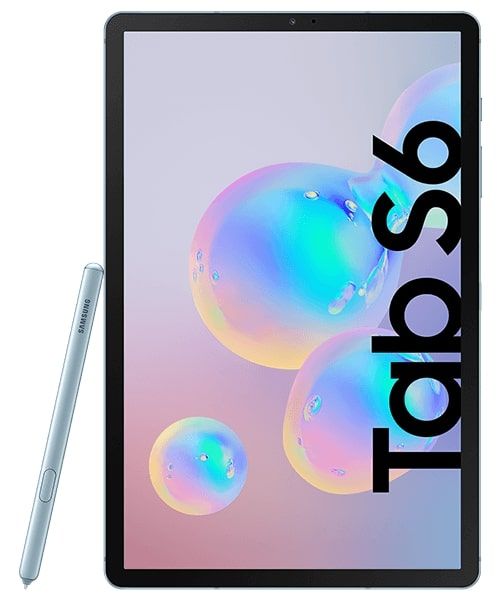
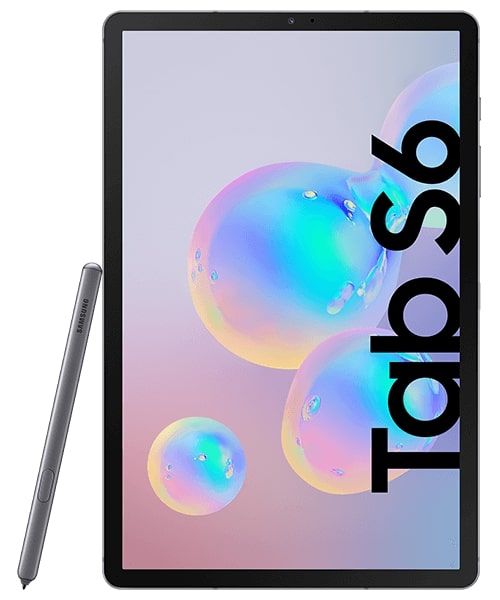
The Galaxy Tab S6 comes with an S Pen inside the box and this stylus attaches magnetically to the back of the tablet where it also charges wirelessly. Like the Apple Pencil, the S Pen has a pressure-sensitive tip and comes with 4000-levels of pressure sensitivity. The stylus is Bluetooth enabled and can be used for gestures like taking selfies or scroll through the contents of the Gallery remotely.
In terms of design, the Galaxy Tab S6 has footprint fairly similar to the Tab S5e but the dual camera on the back of the former instantly draws your attention. This setup comprises a 13MP primary sensor along with a 5MP ultra-wide-angle camera with 123º wide field of view. On the front of the Galaxy Tab S6, there’s an 8MP selfie shooter.
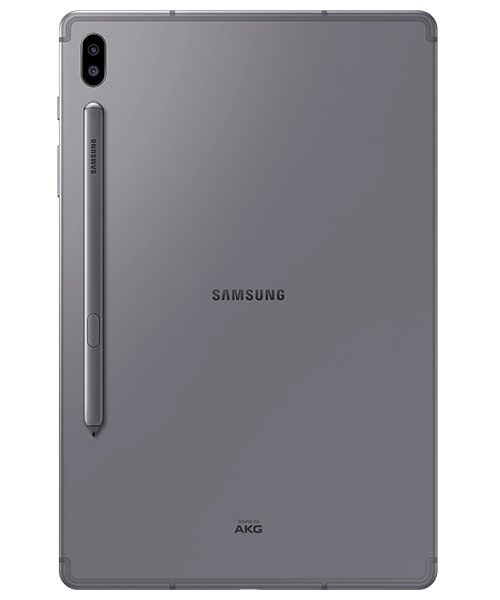

The Galaxy Tab S6 is powered by a large 7,040mAh battery. To refill the battery, Samsung is launching a 15W “Adaptive Fast Charger” inside the box. We’re yet to test out the charging time taken by the not-so-fast charger as well as check for faster charging using other power bricks with higher charging rates.
Samsung will also be selling a specific keyboard case for the Galaxy S6. This keyboard case can be split into two parts – one being the keyboard along with the trackpad which aligns with the magnetic connectors on the bottom edge of the Tab S6 and the second being a backplate with a kickstand that can be used to incline the Galaxy Tab S6 at any desired angle.

One of the key features of the Samsung Galaxy Tab S6 is the DeX Mode which allows users to switch into a desktop-style UI that can be used with either the keyboard case or with the help of an external keyboard and mouse. Samsung says that many apps have specially designed interfaces for the DeX mode but most of these apps otherwise would run like tablet apps only.
In terms of connectivity, the Tab S6 supports dual-band Wi-Fi, Bluetooth 5.0, as well as LTE via a single SIM slot. When it comes to the software, the tablet runs Samsung’s OneUI based on Android 9 Pie. Being a flagship tablet, we can expect an Android 10 release for the Galaxy Tab S6 but the company is yet to start beta testing Android 10 so we’re not sure about the exact rollout.
In India, the Galaxy Tab S6 will only come in Mountain Gray and Cloud Blue colors.
| Specifications |
Samsung Galaxy Tab S6 |
| Size |
- 244.5 x 159.5 x 5.7mm, 420g
|
| Display |
10.5-inch WQXGA, Super AMOLED |
| SoC |
Qualcomm Snapdragon 855 CPU:
- 1x 2.84GHz Kryo 485 +
- 3x 2.42GHz Kryo 485 +
- 4x 1.8GHz Kryo 385
Adreno 640 GPU
|
| Memory and Storage |
- 6GB/8GB of RAM and 128GB/256GB of storage
- Expandable storage up to 1TB via MicroSD card
|
| Camera |
- Rear: 13MP (f/2.0) + 5MP (f/2.2)
- Front: 8MP (f/2.0)
|
| Video |
- Recording: UHD 4K (3840×2160) @ 30fps
- Playback: UHD 8K (7680 x 4320) @ 30fps
|
| Audio |
4 speakers tuned by AKG; Dolby Atmos |
| Ports |
USB3.1 (Type C), POGO
Type-C headset connector included |
| Sensors |
Optical Fingerprint Sensor, Accelerometer, Gyro Sensor,
Geomagnetic Sensor, Hall Sensor, RGB Light Sensor |
| Wireless Connectivity |
- Wi-Fi 802.11 a/b/g/n/ac, 2.4G+5GHz
- VHT80 MU-MIMO
- Wi-Fi Direct
- Bluetooth v5.0
- LTE
|
| GPS |
GPS, Glonass, Beidou, Galileo |
| Battery and Charging |
7,040mAh (0.35mAh S Pen); Fast Charging |
| Android Version |
Android Pie with One UI |
| Accessories |
Book Cover Keyboard, Book Cover, POGO Charging Dock, S Pen |
Samsung Galaxy Watch 4G
The Samsung Galaxy Watch 4G is Samsung’s first smartwatch in India that comes with cellular connectivity. Besides the eSIM support, the Galaxy Watch 4G is essentially the same as last year’s Galaxy Watch. The existing features include inbuilt storage for storing media which is now complemented by Spotify. Users can either pair Bluetooth headsets with the Galaxy Watch 4G or listen to media content using the inbuilt speakers. Additionally, the inbuilt GPS comes in handy for tracking a wide variety of exercises.
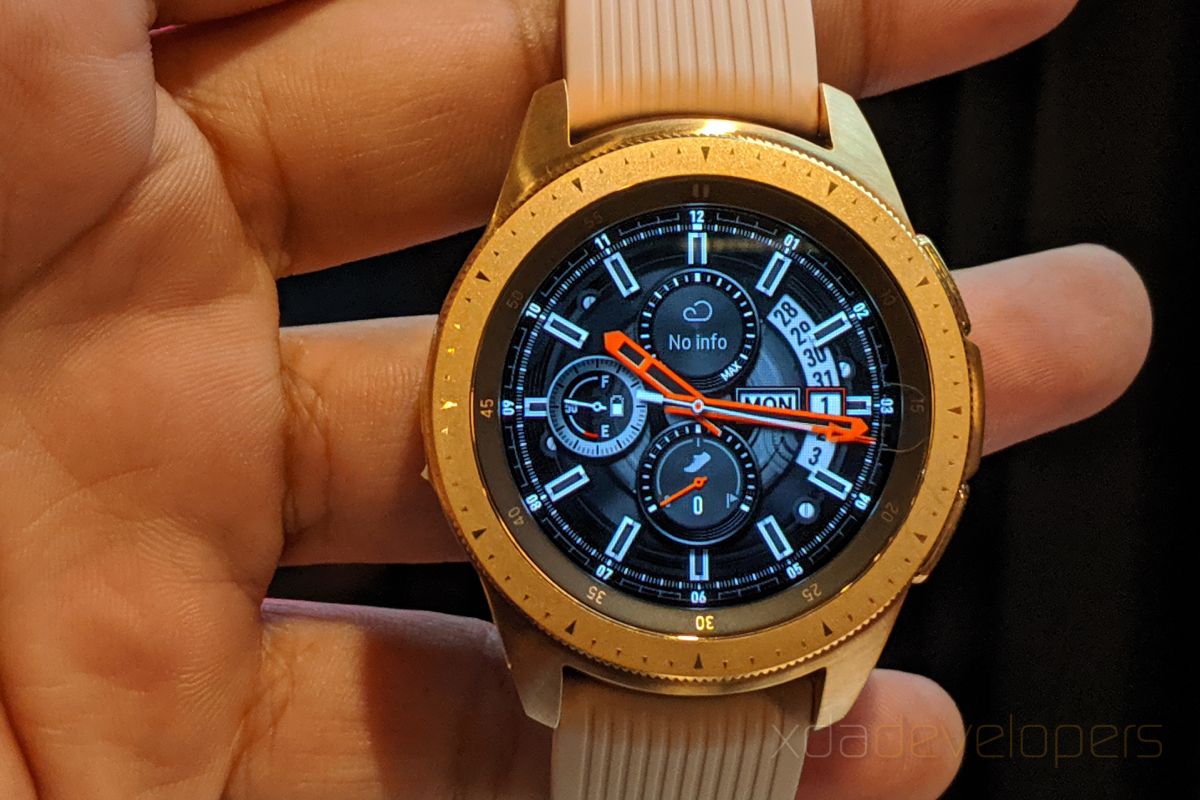

The Galaxy Watch 4G supports eSIM functionality for Airtel and Reliance Jio in India since these are the only two operators that offer eSIM functionality in the country. It will be available in 42mm and 46mm dial sizes in Silver and Golden colors.
Samsung Galaxy Watch Active2
Samsung has also introduced the Galaxy Watch Active2, which is a sportier and lightweight design. The bezels around the dial can be used to as a touchpad to simulate the functionality of the rotating dial. The smartwatch is capable of 39 different types of workouts. Besides the various inbuilt and downloadable watchfaces for the Galaxy Watch Active2, users will also be able to simply create new watchfaces matching with their attire by taking a picture of what they’re wearing. The smartwatch comes with options between stainless steel and aluminum dials in silver, black, and rose golden colors with a variety of straps to choose from.
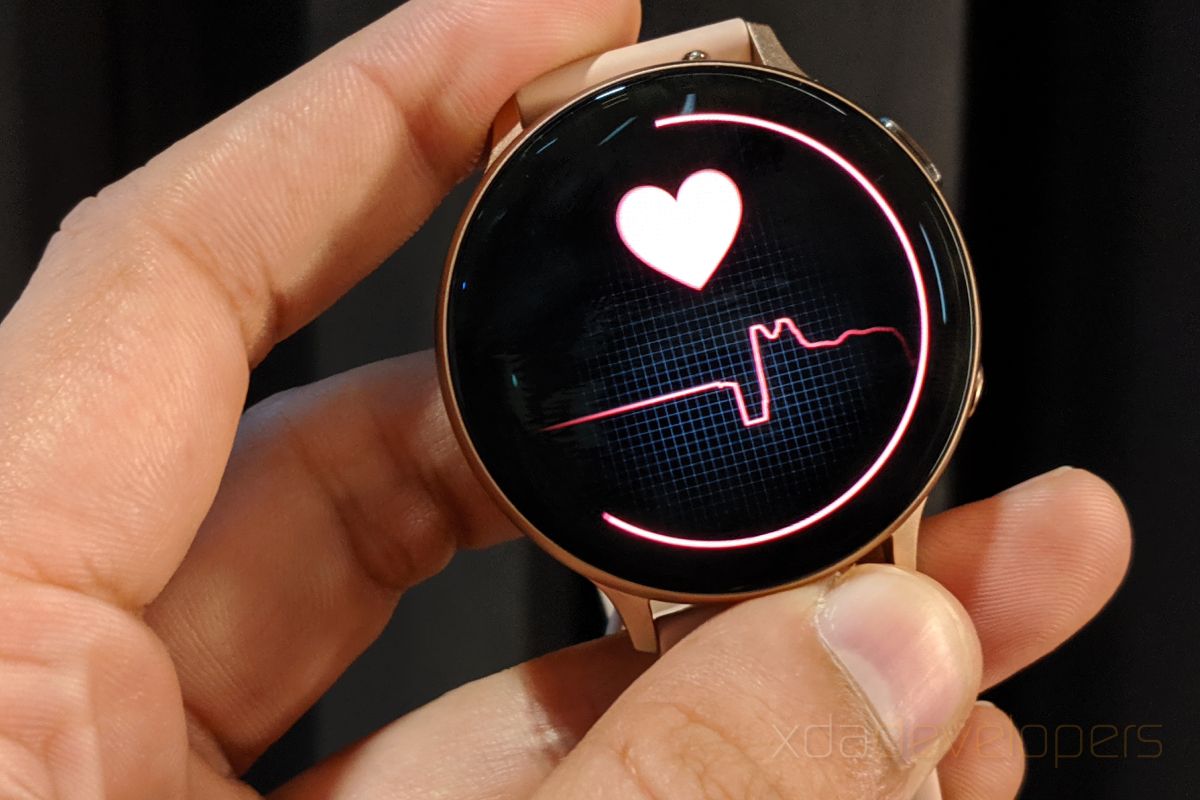

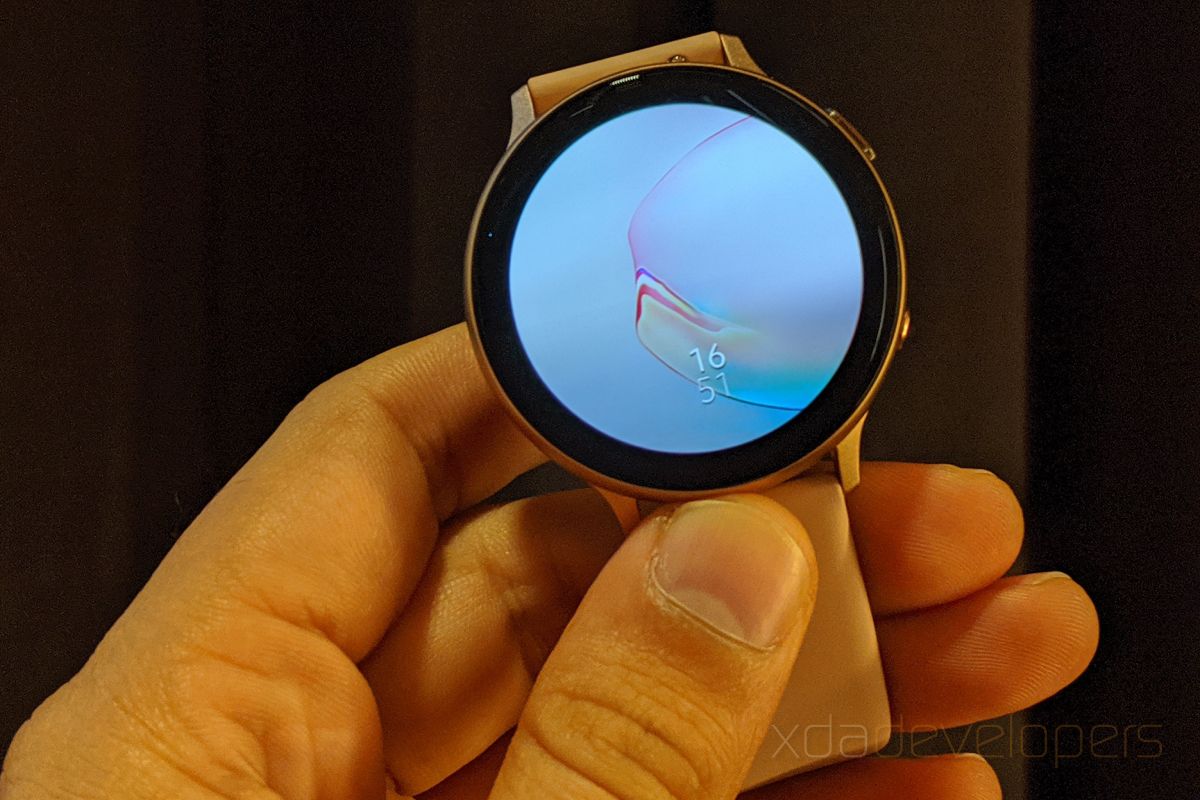
The heart rate sensor on the Galaxy Watch Active2 is improved and now comes with eight photodiodes for highly effective and fast measurements. In India, Samsung is only launching the 44mm variant of the smartwatch and it comes with a 340mAh battery. The smartwatch comes with 4GB of internal storage which can be used to save media files to be played on the go. The Indian variant does not get LTE support but there’s Wi-Fi for the watch to connect directly to the network.
Samsung Galaxy Tab S6, Galaxy Watch 4G, and Galaxy Watch Active2: Price & Availability in India
The Samsung Galaxy Tab S6 is priced at ₹59,990 (~$845) in India and the S Pen does not need to be bought additionally. This price is for the 6GB/128GB variant of the Tab S6 with LTE support. The keyboard case must be bought separately and is priced at ₹10,999 (~$155) but under the limited period offer, early birds can get it at 50% discount i.e. for ₹5,499 (~$78) .
The Samsung Galaxy Watch 4G 42m model will be priced at ₹30,990 (~$435) and the 46mm model will be priced at ₹28,490 (~$400) . The non-4G variants in 42mm and 46mm sizes are currently priced at ₹29,990 (~$425) and ₹26,000 (~$365) in India but we may see a price-cut.
The Samsung Galaxy Watch Active2 Steel finish will be priced at ₹31,990 (~$450) whereas the Aluminum variant will cost ₹26,990 (~$380) .
All of these products will be available online via Amazon India, Flipkart, and Samsung’s e-Shop as well as through Samsung’s premium retail stores throughout India starting tomorrow i.e. October 11th.
Update: Samsung Galaxy Watch Active2 4G variant launched in India
Samsung has finally launched the 4G/LTE variant of the Galaxy Watch Active2 in India. The smartwatch comes with e-sim connectivity with support for Airtel and Reliance Jio. The presence of 4G and LTE allows users to make calls directly from the watch, as well as stay connected to the internet on the move.
The Samsung Galaxy Watch Active2 4G comes with a 44mm steel dial in silver, black and gold finishes for ₹35,990 (~$505). The Galaxy Watch Active2 4G will be available across offline channels, Samsung Opera House, Samsung e-shop and leading online portals.
Buy the Samsung Galaxy Watch Active2 4G from Amazon.in
The post [Update: Watch Active2 4G variant launched] Samsung launches Galaxy Tab S6 with S-Pen, Galaxy Watch 4G, and Galaxy Watch Active2 in India appeared first on xda-developers.
from xda-developers https://ift.tt/2p8fFDP
via
IFTTT




























